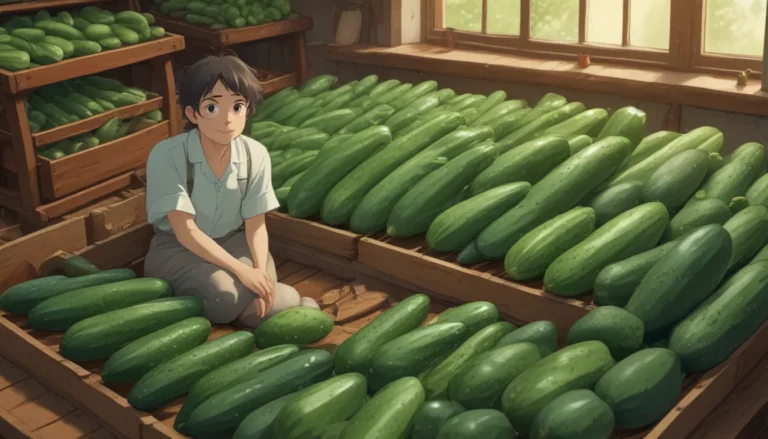The Ultimate Guide to Growing Sunflowers as a Cover Crop

Are you looking for a sustainable way to improve your soil and prevent erosion while also enjoying beautiful blooms and providing seeds for birds? Look no further than sunflowers as a cover crop! In this in-depth guide, we’ll explore the benefits, potential drawbacks, where to buy seeds, how to sow and grow sunflowers, and when to till for maximum soil health.
Benefits of Growing Sunflowers as a Cover Crop
Planting cover crops is a fantastic way to enhance your soil’s health and prevent erosion. Sunflowers, in particular, offer numerous advantages when used as a cover crop. Here are some of the benefits you can expect:
- Sunflowers grow well in dry and hot conditions, making them ideal after a spring crop like radishes or lettuce.
- Their taproots help break up compact soil and improve soil structure.
- Sunflowers support the growth of healthy mycorrhizae and beneficial soil microbes, enhancing soil health.
- They can suppress weeds by shading them out, similar to other broadleaf cover crops.
- Planting sunflowers in a mixed cropping system can provide support for climbing vines, creating a diverse and beneficial ecosystem.
- Sunflowers can also be utilized as green manure by tilling them back into the soil after they have served their purpose as a cover crop.
A Few Potential Drawbacks
While sunflowers offer numerous benefits, there are a few potential downsides to consider:
- Sunflowers don’t grow well in cooler weather, limiting their use as a winter cover crop.
- They may not leave as much biomass behind compared to other cover crop options.
- Sunflowers require more space to grow and a bit more effort during the germination period.
- Self-sown seeds may become a nuisance if not harvested promptly.
- Consider the available garden space when planting sunflowers as they require ample room to grow.
Where to Buy Seeds
When selecting sunflower seeds for use as a cover crop, it’s essential to choose disease-resistant, open-pollinated varieties that bloom within a reasonable timeframe. Look for affordable bulk options specifically labeled as cover crops or microgreens. Here are some recommended varieties:
- Large-Seeded Black Oil: Ideal for attracting songbirds, producing biomass, and reaching a mature height of 5 to 7 feet.
- Incredible: A dwarf variety that grows quickly and is easier to manage when tilling.
- Super Snacker: A hybrid variety that grows to 5 feet and produces meaty seeds for humans or birds.
How to Sow
Sowing sunflowers as a cover crop is a straightforward process, but proper timing and preparation are crucial for success. Follow these steps to ensure your planting goes smoothly:
- Plant sunflowers in a sunny spot with well-draining soil.
- Plan your planting time based on the desired growth stage and the local climate.
- Avoid planting sunflowers in soil where they have been grown in the past few years to prevent disease and pest issues.
- Space seeds according to the variety’s size and growth requirements, and water gently after planting.
- Monitor soil moisture and temperature to ensure successful germination.
How to Grow
Once your sunflowers are established, proper care is essential to maximize their potential as a cover crop. Follow these tips for successful growing:
- Keep the planting area weed-free to give sunflowers a competitive edge.
- Remove debris from previous plantings to minimize disease and pests.
- Water sparingly, as sunflowers do not require excessive moisture.
- Stake tall varieties to prevent damage from strong winds and chop them down if they fall over.
- Check out our comprehensive growing guide for detailed care instructions.
When to Till
Tilling sunflowers as green manure can provide long-term benefits to your soil. Here’s what you need to know about timing and techniques for tilling:
- Wait at least four weeks before planting the next crop to allow sunflowers to break down into compost.
- Consider using sunflowers as erosion control over multiple growing seasons by planting perennial varieties.
- Harvest sunflowers before they dry out completely to facilitate easier tilling and decomposition.
- Learn more strategies for tilling cover crops in our detailed guide.
Conclusion: Sunflowers for Healthy Soil and Beautiful Blooms
Growing sunflowers as a cover crop offers a range of benefits for your garden, soil, and wildlife. By choosing the right seeds, sowing, and caring for your sunflowers properly, you can create a thriving ecosystem that enhances soil health and provides valuable resources for birds and pollinators.
Have you tried planting sunflowers as a cover crop in your garden? Share your experiences and tips in the comments below! And for more information on growing sunflowers, check out our recommended guides on sunflower care and varieties.





